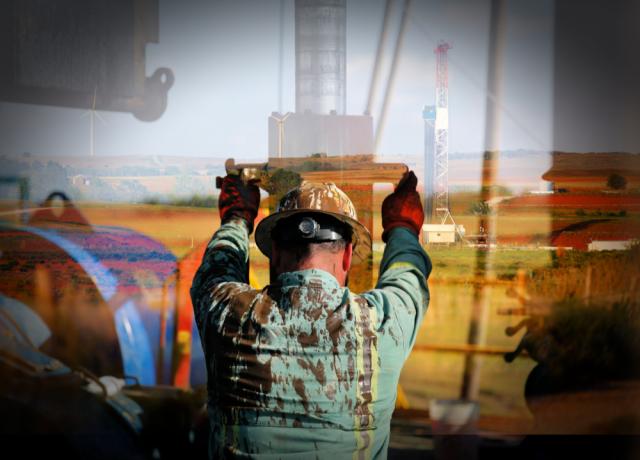
States such as Wyoming, North Dakota, Alaska and New Mexico—where more than 14% of state and local revenue comes from fossil fuels—stand to be hardest hit, according to the paper from Resources for the Future, a Washington think-tank. (Source: Hart Energy)
As the world shifts to a greener future, the fossil fuel industry is often quick to point out that communities reliant on oil, gas and coal production risk being left in the lurch.
If the industry disappears, it argues, it is not only the jobs it provides that will go up in smoke—so too will the taxes and royalties it pays that support local schools, hospitals and infrastructure.
Quantifying the scale of that fiscal hit has long eluded researchers. But a new paper from Resources for the Future, a Washington think-tank, puts a figure on it for the first time—and it is chunky.
Between 2015 and 2020 fossil fuels generated a whopping $138 billion annually for localities, states, tribes and the federal government in the U.S., the paper finds. That’s more than the GDP of Kuwait.
“Fossil fuels are a major revenue source for many governments in the U.S.,” Daniel Raimi, lead author of the paper and RFF fellow, told ES. “A rapid transition to clean energy would reduce those revenues and have substantial effects in five to 10 states around the country.”
States such as Wyoming, North Dakota, Alaska and New Mexico—where more than 14% of state and local revenue comes from fossil fuels—stand to be hardest hit.
Alaska has long relied on the oil industry for state income. But the shale boom has made the industry a key contributor to the public purse in states such as North Dakota and New Mexico.
Coal dependent communities such as Wyoming, where more than half of revenues depend on fossil fuels, are likely to be hit quickest and hardest, as the country shifts away from the most carbon intensive energy source in the near term.
Fossil fuel revenues will fall regardless of what climate policies the U.S. pursues. But the more aggressive the action taken, the quicker they will disappear.
And while renewable energy will make its own payments to local, state and federal coffers, this will not, for the most part, act as a replacement in the places that lose out on fossil fuel revenues.
The loss of fossil fuel revenues is not a reason to delay action on climate, Raimi argues. But it underlines the need for authorities to work to support communities that stand to lose out in the transition to cleaner fuels.
“What our paper demonstrates is that [climate] action is going to reduce state and local revenues and that is a problem we need to try to get ahead of before it manifests severely,” he said.
This article is an excerpt of Energy Source, a twice-weekly energy newsletter from the Financial Times.
Recommended Reading
Carlson: $17B Chesapeake, Southwestern Merger Leaves Midstream Hanging
2024-02-09 - East Daley Analytics expects the $17 billion Chesapeake and Southwestern merger to shift the risk and reward outlook for several midstream services providers.
Chesapeake Enters into Long-term LNG Offtake Agreement
2024-02-13 - Chesapeake Energy entered into a long-term liquefaction offtake sale and purchase agreement with Delfin LNG and Gunvor Group for a 20-year period.
Segrist: The LNG Pause and a Big, Dumb Question
2024-04-25 - In trying to understand the White House’s decision to pause LNG export permits and wondering if it’s just a red herring, one big, dumb question must be asked.
Midstream Builds in a Bearish Market
2024-03-11 - Midstream companies are sticking to long term plans for an expanded customer base, despite low gas prices, high storage levels and an uncertain political LNG future.
DUG GAS+: Chesapeake in Drill-but-don’t-turn-on Mode
2024-03-28 - COO Josh Viets said Chesapeake is cutting costs and ready to take advantage once gas prices rebound.





